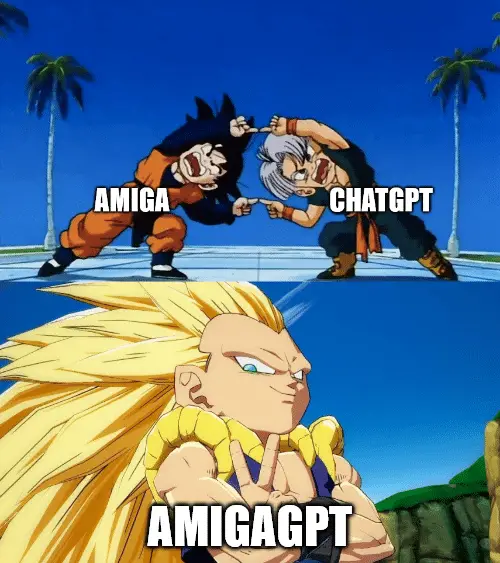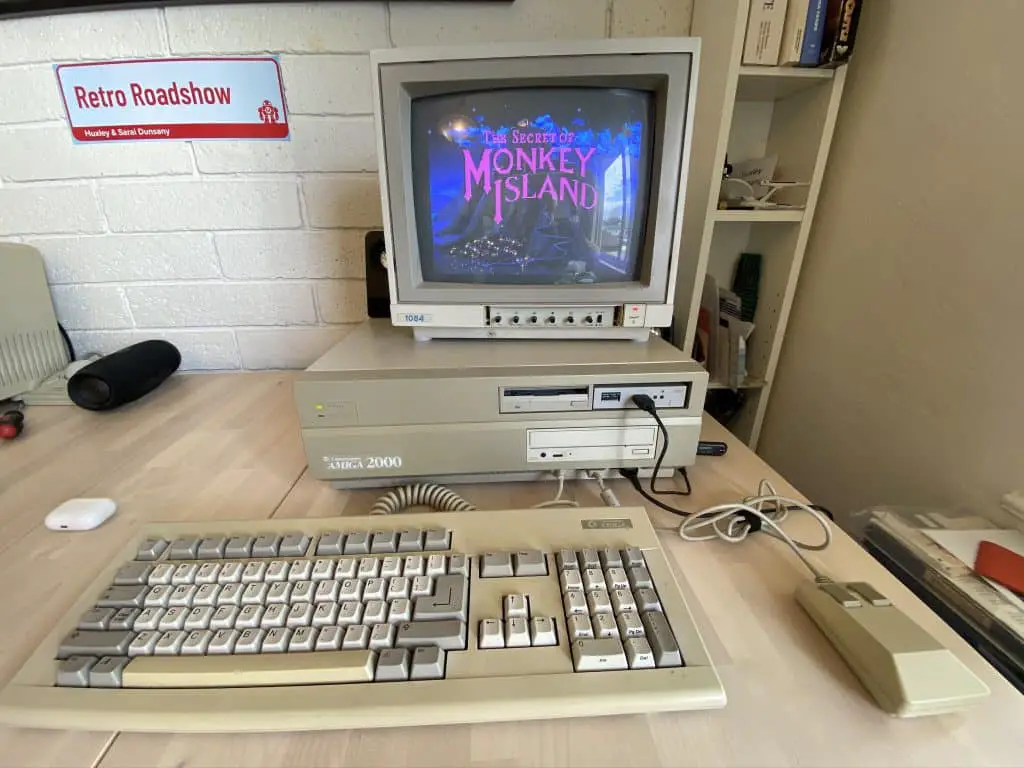The Amiga, one of the most iconic computers of the 80s and 90s, marked an era in the world of technology, thanks to its advanced graphics and sound capabilities; decades later someone thought of doing AmigaGPTthat is, “ChatGPT on Amiga” to be clear and this device continues to live in the hearts of enthusiasts and developers, who are constantly looking for new ways to extend its capabilities even in the modern world.
One of these innovative projects is precisely AmigaGPTwhich allows the Amiga to interact with modern AI models, such as OpenAI’s ChatGPT, via web APIs.
What exactly is AmigaGPT?
AmigaGPT is a software interface that allows users to connect an Amiga computer to advanced artificial intelligence models, such as OpenAI’s ChatGPT, through APIs.
In short, AmigaGPT allows an Amiga computer to communicate with a modern artificial intelligenceperforming text requests and receiving AI-generated responses in real time; this project represents a bridge between retro technology and modern AI innovations, demonstrating how old and new can interact in surprising ways.
How and why did AmigaGPT come into being and who created it?
AmigaGPT was developed Cameron Armstrong, also known as Night Fox; the idea behind AmigaGPT was integrate the advanced capabilities of ChatGPT and DALL-E with the AmigaOS ecosystemoffering Amiga users the I canbility to take advantage of the latest artificial intelligence technologies without having to use a web browser3.

AmigaGPT was born from the passion of a group of developers and retrocomputing enthusiasts, eager to explore the possibilities offered by the integration of modern artificial intelligence technologies with vintage hardware and software; the project was started by members of the Amiga community, who saw in this idea a way to revitalize and give new life to their beloved computerconnecting it to the world of modern APIs.
The main reason behind the creation of AmigaGPT is the technical challenge and the desire to demonstrate that even obsolete hardware can be used in an innovative and current way; the development team wanted to show how, with the right tools, it is possible to extend the capabilities of an Amiga computer to interact with modern cloud-based technologies.
How it works with APIs
To understand how this curious tool works, one thing must first be said: neither the Amiga, nor most modern PCs (even if some have been put on the market recently), have an NPU (Neural Processing Unit), that is, a neural network.making it virtually impossible to use artificial intelligence locally and consequently requiring an external service (in this case using APIs).
It should be noted, however, that computers with neural networks are not things of the modern era and that SEGA already tried to market one in the 80s, but failed.
AmigaGPT therefore uses the API (Application Programming Interface) to communicate with AI models like ChatGPT; APIs are interfaces that allow different software to communicate with each other, sending and receiving data.
In this case, the AmigaGPT software sends a text request to the OpenAI APIs, which processes the request using the GPT-3 or GPT-4 language model and sends a response that is then displayed on the Amiga.
To use AmigaGPT, you need an active Internet connection, since all the language processing is done on OpenAI’s servers. AmigaGPT acts as an intermediary, translating the user’s requests into a format that can be processed by the APIs and then receiving and displaying the AI’s response.
Connecting an Amiga to the modern internet
Connecting an Amiga to the Internet today may seem like a challenge, but there are several solutions to do so. One of the most common is the use of compatible Ethernet cards, such as the X-Surf or the Plipboxwhich allow you to connect your computer to a modern network via an Ethernet cable; another option is to use Wi-Fi solutions such as the WiFi232which emulates a serial modem connected to a wireless network.
Once connected to the Internet, the Amiga computer can use specialized software to browse the web, send email, and of course use AmigaGPT to interact with modern APIs; the Amiga, while limited compared to today’s computers, can still handle network connections effectively, especially if updated with the right hardware and software.
Main features and capabilities of AmigaGPT
AmigaGPT allows you to exploit the power of ChatGPT directly on an Amiga computer. Key features include:
- Interaction with ChatGPT: Users can ask questions, ask for advice or simply talk to the artificial intelligence directly from the Amiga.
- Compatibility with various Amiga models: AmigaGPT is designed to run on a variety of Amiga models, as long as Internet connection capabilities are present.
- Operation via terminal: The interface is simple and works through a terminal window, making it lightweight and suitable for the limited resources of the Amiga.
- Extending the system functionality: AmigaGPT demonstrates how a vintage system can be enhanced through the integration of modern technologies, extending its capabilities in ways that were unthinkable at the time of its release.

But this magical tool has some functions, which the “original version” also takes away:
- Text and Image Generation: AmigaGPT can generate text and images based on user-supplied prompts.
- Integration with AmigaOS: The application is fully integrated with AmigaOS, offering a smooth and native user experience.
- Interface Customization: Users can customize the look and feel of the application, including choosing fonts and the ability to open the application in a custom screen.1.
- Speech Synthesis Capability: AmigaGPT can use the Amiga’s speech synthesis capability to read the generated text aloud.
When old meets new and it works too
The AmigaGPT project is a prime example of how the integration of vintage and modern technologies can yield surprising results.

A computer like the Amiga, designed at a time when artificial intelligence was still in its infancy, can today interact with one of the most advanced language models in the world, thanks to the API; this demonstrates not only the flexibility of the Amiga hardware, but also the ingenuity of the developers who continue to explore its potential.
Correlation with OpenAI’s ChatGPT
AmigaGPT is based on the ChatGPT model developed by OpenAI, which is one of the most advanced AI models for understanding and generating natural language, and ChatGPT has been trained on a large amount of text, enabling him to understand and generate coherent answers to a wide range of questions.
While ChatGPT runs on powerful and modern servers, AmigaGPT acts as an interface that allows an Amiga computer to talk to ChatGPT and this means that, even with limited hardware resources, The Amiga can access vastly more computational power, using OpenAI’s cloud computing.
The importance of fighting planned obsolescence
As playful as all this may seem, it has a technological value of “nothing is thrown away”, much bigger than it seems.
If Windows 11 is not possible to put on modern hardware, it is well known that there are some “tricks” to “revive” hardware that would otherwise be considered dead, It must be said, however, that very often people are not informed about this and we are at the mercy of a dangerous culture of “electronic and IT disposables”.

This project proves that nowadays even a device that is over 30, if not 40 years old not only does it still have “something to say”, but it can be more than operational in some areas, and even connectable to today’s internet.
Conclusion
AmigaGPT represents a fascinating meeting of past and present, demonstrating that technology does not necessarily have an “expiration date”; even a computer like the Amiga, which is well over thirty years old, can be used to interact with the most advanced artificial intelligence technologies available today.
This project not only renews interest in the Amiga, but also highlights the importance of continuous innovation and experimentation, regardless of the technological era they belong to.
#AmigaGPT #ChatGPT #API #Amiga #computers
